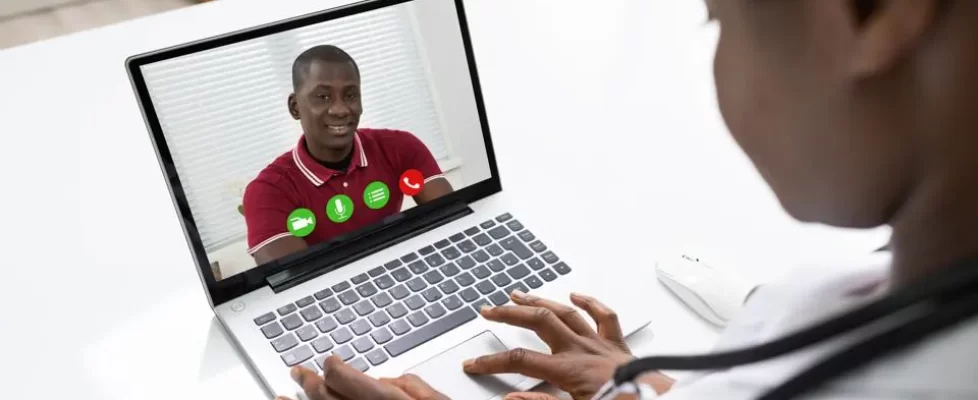Examining The Realities Of Hospital-At-Home Technology Implementation
The concept of hospital-at-home isn’t new, but it’s much more than an industry buzzword. It can be a game-changer for the healthcare industry if we are both innovative and realistic. It has the potential to transform the full experience for both providers and patients. Instead of requiring a patient to be onsite at a facility with immediate availability of a registered nurse, acute hospital care can be provided at home.
Let’s examine the opportunities as well as the concerns in making the hospital-at-home concept a reality.
Taking A Measured Approach
Any significant innovation comes with challenges, and healthcare can be especially demanding given the complications of structure, reimbursement, insurance, resource allocation, technology aversion, staffing shortages and the list goes on. For healthcare systems, the shift is slow simply because of bureaucracy, which can make it difficult to implement any new technology. And many hospitals are financially burdened without extra capital for investment. However, those same hospital systems are suffering from staffing shortages and could greatly benefit from implementing the full suite of remote monitoring technology and patient care outside of the traditional environment.
While the idea is to provide quality care outside a traditional hospital, patients must still be monitored, which requires both investments in equipment and technology and in people who can maintain the technology as well as actually use the systems. Quantity of staff depends on multiple factors from the number of patients involved to the quality and complexity of the system. It’s definitely a capital, educational and maintenance investment.
While this telemonitoring will likely be a gradual transition for most organizations, there will ultimately be more outpatient monitoring and management than we have today. In most cases, it will be a stepwise approach, starting with one department before the concept expands to an entire healthcare system or total hospital. At the onset, it’s important to consider the full compatibility of the technology to ensure it’s scalable at the enterprise level. It makes no sense for each department to have its own preferred solution.
Technology Tailored For Unique Clinical Needs
In some cases, a hospital could only be interested in a particular therapeutic area such as Cedars-Sinai and cardiac rehab while a leading children’s research hospital wanted a more comprehensive solution to address congestive heart failure, diabetes and renal failure. MD Anderson concentrated on oncology applications. (Full disclosure: Vivalink is actively working with these hospitals.)
The big picture is understanding that the technology exists to accommodate remote monitoring for a broad array of healthcare specialties—which in turn potentially benefits a variety of healthcare providers and, ultimately, patients. In one JAMA study, while patients receiving hospital-at-home care had a slightly longer average treatment period, they also had a lower percentage of readmission and lower rates of depression and anxiety than traditional in-hospital patients with chronic disease who started in emergency care.
Since 2016, Mass General Brigham has cared for more than 2,000 acutely ill patients and saved 10,000 hospital bed days since implementing a hospital-at-home program. More than half the patients enrolled were more than 65 years old, so the technology interaction had to be accommodating and unintimidating to make it viable. But it’s worked. A comprehensive system assigns and delivers resources and allocates tasks across a team of providers. Sensors provide continuous vitals monitoring so the communication is as comprehensive as that of inpatient care. According to Jared Conley, MD, PhD, MPH, associate director of the Healthcare Transformation Lab at Massachusetts General Hospital, it’s estimated that 15%-30% of inpatient care could be delivered at home within the next 10-15 years.
“Delivering hospital-level care at home is complex and multiple factors contribute to its success, including the need to remotely monitor patients’ vitals and ensure such data is secure and easily accessible to clinicians,” says Conley.
Data from Brigham and Women’s Hospital further supports the positive impact with a randomized controlled trial of hospital-at-home care, reporting 38% reduction in costs, 70% reduction in readmissions and 50% improvement in patient mobility.
Ensuring Success For Patients and Providers
We know there are multiple metrics to gauge success. Two that are paramount are patients’ willingness to participate and financial feasibility for providers. Experience validates that if the hardware and software are easy for patients to use and not unduly burdensome, they will adhere to the protocol. Increased use of telemedicine since the Covid-19 pandemic helped ease the way for patients to be more comfortable with the idea. The provider side is more complex. The technology must be user-friendly and the care eligible for reimbursement.
Updated G-codes via the Centers for Medicare and Medicaid Services (CMS) open the door for remote patient monitoring and home health monitoring using synchronous telemedicine to be reimbursed as part of a defined patient care plan. If a provider can be reimbursed for delivering a service equal to that offered in-facility while more efficiently caring for patients, it removes a significant obstacle to at least trying the hospital-at-home concept for acute care scenarios.

